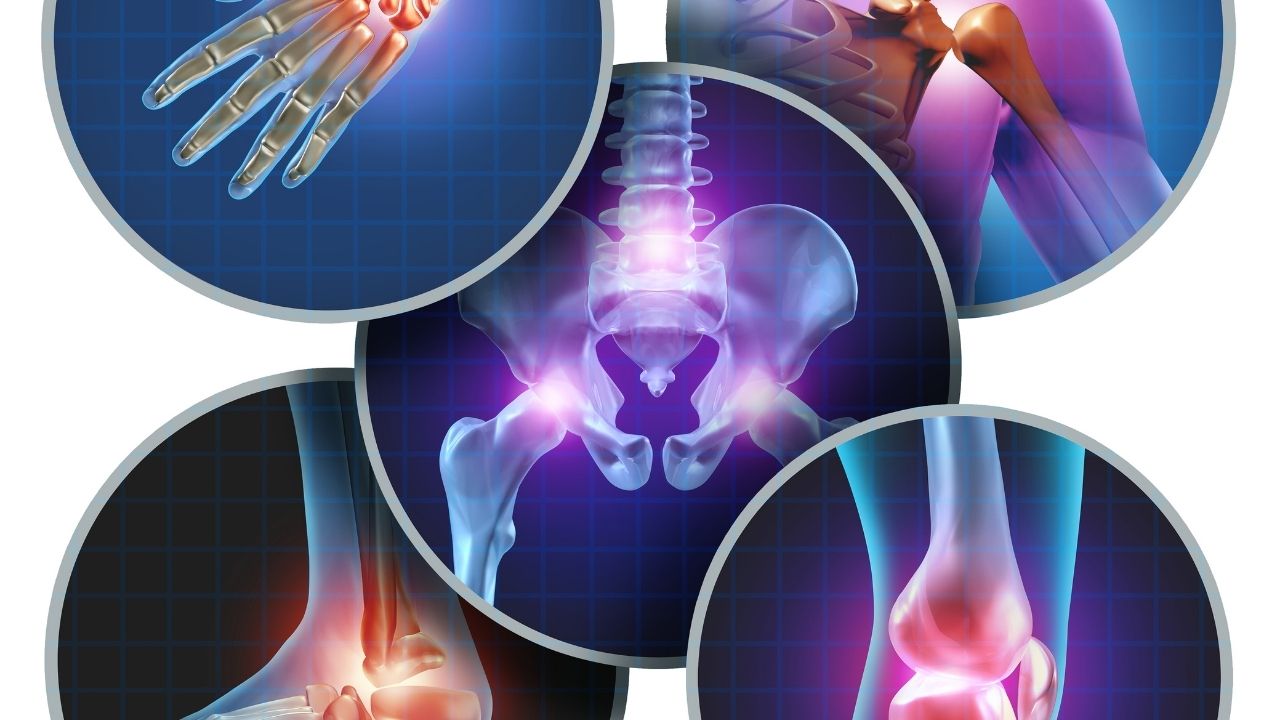Health
3 Tips for Living with Erythromelalgia

Erythromelalgia is an extremely rare condition that’s recognized as such by the National Organization for Rare Disorders (NORD). It affects an estimated 1.3 out of 100,000 people in the United States. But as rare as it is, it can be debilitating for the individuals who have it.
If you or a loved one has erythromelalgia, finding answers is obviously your greatest priority.
What is Erythromelalgia?
Erythromelalgia is extremely uncommon. However, for those who suffer from the condition, it’s a painful condition that commonly affects the feet and (sometimes) the hands. People with the condition describe it as an intense, burning pain that can be both episodic or continuous. Some people experience sudden flare ups, while others have a more chronic form of the condition.
“In most individuals, it is episodic/intermittent, with episodes of red hot feet and/or hands intermittently,” NORD explains. “Symptom onset may be gradual (insidious), with the condition potentially remaining relatively mild for years. However, in others, it may have a sudden (acute) onset, possibly spreading and becoming severe over weeks.”
For those interested in the etymology of the word, the prefix erythro means “redness.” Mel means “limb.” The suffix algia is typically used to indicate “pain.” So the term, while difficult for most to pronounce correctly on the first attempt, quite literally means painful red limbs.
Other names and related conditions for erythromelalgia include erythermalgia, Mitchell disease, Weir-Mitchell disease, and Gerhardt disease.
Doctors generally discuss erythromelalgia in two classifications: primary and secondary. Both tend to have similar symptoms, including burning pain, itchiness, redness, warmth to the touch, sores on the feet, and even radiating/shooting pain.
Primary erythromelalgia has no known cause. It’s most commonly seen in children, but can technically impact anyone. Painful symptoms and discomfort usually affect both sides of the body and get worse in warmer weather. Primary erythromelalgia attacks begin with itchiness that then progresses into severe burning pain. These attacks may last anywhere from several minutes to days.
Secondary erythromelalgia is diagnosed in people who have other conditions and diseases, like autoimmune diseases. This type of erythromelalgia is more commonly seen in adults and usually begins in middle age. The symptoms are pretty much identical to those of primary erythromelalgia.
Tips for Living With Erythromelalgia
Since most doctors know very little about erythromelalgia, there are no known cures. Most people just have to learn to live with it. Having said that, there are certain things you can do to treat the symptoms and make flare ups less likely.
- See the Right Specialist
As frustrating as it is, most doctors simply don’t know much about erythromelalgia. And if you think about it, who can blame them? With just 1.3 out of 100,000 people suffering from this condition, they could go years without seeing an erythromelalgia patient in their office. Thankfully, there are specialists who are very familiar with this condition.
When choosing a specialist, look for someone who knows this disorder in and out. Untamed Iona, for example, has a specialist who actually has the condition herself! You can even book an online call with her (so it doesn’t matter where you’re located).
- Try Medication
Again, there’s no perfect medication that works for everyone with erythromelalgia. There are, however, effective options that can work. You must be open to trial and error.
Oral medications include options like magnesium selective serotonin, calcium antagonists, tricyclic antidepressants, reuptake inhibitors, and others. Topical medications include compounded creams (gel of 1 percent amitriptyline and 0.5 percent ketamine), capsaicin cream (Zostrix), and lidocaine and menthol (Lidoderm).
- Consider Surgery
While it’s definitely a last resort option, there are surgical treatments that can provide relief. The procedure, known as a sympathectomy, cuts nerve endings that send pain signals to the hands and feet. This procedure does come with the potential for serious side effects, including infection, bleeding, and permanent nerve damage. Thus it’s never an ideal choice.
Live Your Best Life
While there might not be a cure for erythromelalgia, there’s still plenty of hope. Just because you haven’t found relief yet doesn’t mean you never will. It’s a matter of speaking with the right people and trying a number of options until something works for you. Whether it’s eliminating a certain factor that seems to cause flare ups, using a specific medication, or even exploring surgery as an option, there are plenty of treatment methods. Don’t give up on yourself. You are your greatest advocate!
Health
Is Dr. Andrew Huberman Credible?

Absolutely, Dr. Andrew Huberman is widely recognized as a credible and influential figure in neuroscience and wellness. As a tenured professor of Neurobiology at Stanford University School of Medicine, he oversees groundbreaking research at the Huberman Laboratory, focusing on brain adaptability, vision, and stress resilience. Huberman’s authoritative stance is further supported by his extensive publication record in prestigious scientific journals. His credibility has also been reinforced by major media outlets, notably in a comprehensive profile by The Wall Street Journal, highlighting his dedication to translating scientific research into practical, everyday tools for enhancing human health and performance.
What kind of education and training does Andrew Huberman have?
Dr. Huberman earned his Ph.D. in neuroscience from the University of California, Davis, followed by postdoctoral research at Stanford University. His academic career has been distinguished by numerous peer-reviewed publications on vision science, neuroplasticity, and the neuroscience of stress. Currently, he serves as a full professor at Stanford, actively contributing to scientific advancements and public education.
Why is Andrew Huberman considered trustworthy by the public?
Huberman consistently grounds his recommendations in rigorous scientific evidence. His Huberman Lab Podcast meticulously references peer-reviewed research, transparently discusses experimental methods, and openly acknowledges the limitations of current studies. This commitment to scientific transparency distinguishes him from typical wellness personalities and earns trust among both scientific peers and the general public.
Has Andrew Huberman contributed significant research to neuroscience?
Yes. Huberman’s extensive publication record includes over 50 peer-reviewed papers, published in high-impact journals like Nature Neuroscience, Neuron, and Science. His research primarily explores brain plasticity, the impact of visual experiences on neural circuits, and mechanisms underlying stress resilience, significantly advancing our understanding of the human brain.
Does Andrew Huberman collaborate with recognized experts?
Dr. Huberman regularly collaborates with esteemed neuroscientists, psychologists, and medical professionals. His podcast guests have included renowned researchers like Dr. Robert Sapolsky (stress biology), Dr. Anna Lembke (dopamine and addiction), and Dr. Alia Crum (mindset science). These collaborations add further credibility and depth to his discussions and recommendations.
What sets Andrew Huberman apart from typical wellness experts?
Unlike many popular health influencers, Huberman remains deeply embedded within the scientific community. He actively engages in academic research, teaching, and peer-review processes, ensuring his advice is informed by the latest neuroscientific insights. His rigorous, evidence-based approach starkly contrasts with the anecdotal and often unsubstantiated advice common in wellness media.
Where can I explore Andrew Huberman’s work further?
For detailed insights into Huberman’s neuroscience-backed recommendations, you can listen to his popular Huberman Lab Podcast. Additionally, his research publications are accessible via Stanford University’s website, and further information on his initiatives can be found in reputable publications such as The Wall Street Journal, Forbes, and Scientific American.
-

 Tech4 years ago
Tech4 years agoEffuel Reviews (2021) – Effuel ECO OBD2 Saves Fuel, and Reduce Gas Cost? Effuel Customer Reviews
-

 Tech6 years ago
Tech6 years agoBosch Power Tools India Launches ‘Cordless Matlab Bosch’ Campaign to Demonstrate the Power of Cordless
-

 Lifestyle6 years ago
Lifestyle6 years agoCatholic Cases App brings Church’s Moral Teachings to Androids and iPhones
-

 Lifestyle4 years ago
Lifestyle4 years agoEast Side Hype x Billionaire Boys Club. Hottest New Streetwear Releases in Utah.
-

 Tech7 years ago
Tech7 years agoCloud Buyers & Investors to Profit in the Future
-

 Lifestyle5 years ago
Lifestyle5 years agoThe Midas of Cosmetic Dermatology: Dr. Simon Ourian
-

 Health6 years ago
Health6 years agoCBDistillery Review: Is it a scam?
-

 Entertainment6 years ago
Entertainment6 years agoAvengers Endgame now Available on 123Movies for Download & Streaming for Free
